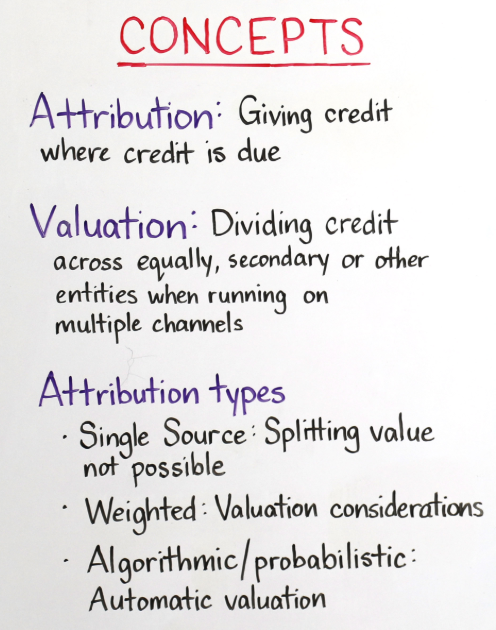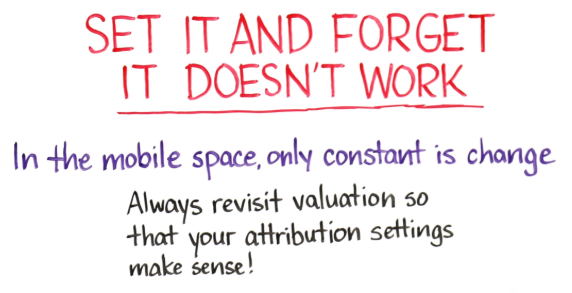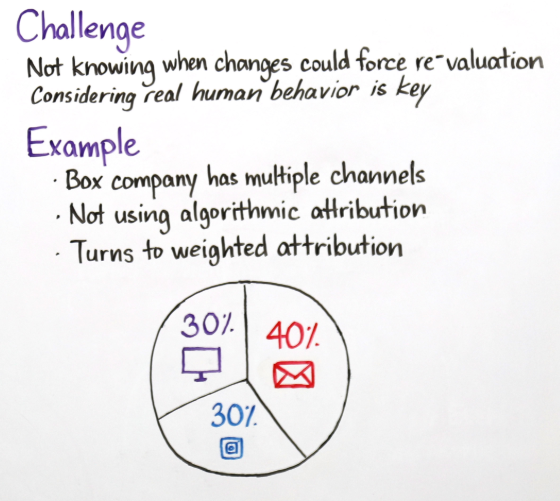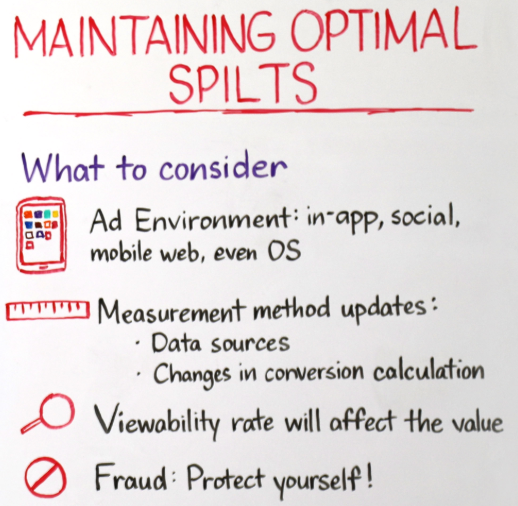
Maintaining the relevance of your attribution framework
Welcome to the twenty sixth edition of MAMA Boards, an AppsFlyer video project featuring leading mobile marketing experts on camera.
For today’s mini whiteboard master class, we have Michael Hew, Senior Media Buyer for M&C Saatchi Performance, a full-service agency focused on delivering world-class performance marketing services to drive growth for brands across all digital channels.
At the very heart of your mobile marketing tech stack lies measurement and attribution for your pre- and post-install user activity. Of course, since attribution is not a one-size-fits-all methodology, Michael covers the key areas to consider when implementing and maintaining your own attribution framework, and examines the different factors that will influence this decision. It’s time to clear out the noise and focus on what matters.
Real experts, real growth. That’s our motto.
Enjoy!
Transcription
Hi, welcome to another edition of MAMA Boards by AppsFlyer.
I’m Michael Hew, a senior planner at M&C Saatchi Performance. We are a performance marketing agency helping brands grow in this hyper-connected age.
Today, I’ll be talking to you about maintaining the relevance of your attribution framework. Note that this session is for those of you who are already using or considering multi-channel attribution. I’ll be going over some things that should be taken into consideration, as attribution is not a one-size-fits-all methodology and things are always changing in the digital age.
First, what are the core concepts of an attribution framework?
Just a quick refresher first. Attribution is the core concept. We’re giving credit where credit is due. Valuation is the secondary concept, which is when multiple channels come into play and fractioning the credit becomes necessary.
Now, a quick refresher on some of the different attribution types.
First, we have single source, where there’s only one channel, be it social or display or email marketing. 100 percent of the credit will naturally go into that channel.
Second is weighted, where valuation considerations come into play because there are multiple channels.
Third, algorithmic or probabilistic attribution is a subset of weighted where the computer makes the calculations for you. You might have heard of multi-touch attribution. That is just algorithmically looking at all the different touchpoints towards a conversion and then assigning credit. It is important to know that algorithmic or probabilistic attribution exists in some measurement platforms.
Why must I revisit attribution weight and valuation?
Now back to general weighted attribution.
Why should you revisit valuation? It’s because “Set it and forget it” as a concept doesn’t work. In the mobile space, the only constant is change. For this reason, if your attribution methodologies are not changing in step, your data over time will not make sense.
In fact, at the agency, this is a key consideration every day with all of our data. We make sure we have a high level of awareness of all the variables that are feeding into our campaigns so that we naturally guide our attribution to what is relevant. Also, what’s important to consider is that real human behavior is key. Let’s keep that concept for later, and take a look at an example.
So, box company has multiple channels.
They’re not using an algorithmic attribution system right now; instead, they’re using weighted attribution, where 40% of the value is going to email marketing, 30% is going to social, and 30% is going to display. Email marketing has been apportioned 40% because it’s shown to have a more direct impact on their conversions.
Now the challenge becomes, over time, do users still interact with their ads in the same way? No. Over time, they should change. Also in measurement: will these variables be counted and calculated accurately? Only if attribution changes as the variables change.
How can I best maintain optimal attribution splits?
Let’s review some of the things to consider.
Firstly, ad environment. Review how users interact with your ads at a high level. For example, let’s say Box Company now introduces Instagram as well as Facebook. This might warrant a higher attribution just because of the amount of attention social usually gets.
Remember, there are a lot of different ad environments (in-app, social, mobile web, even OS), which might affect the different data that gets pulled in. However, if you take into account human behavior, ad environment and how users interact with your ads should be your topmost concern.
Secondly, let’s look at measurement method updates, starting with changes in the data sources. These are changes that occur in the data that’s being fed into your mobile measurement platform.
For example, let’s say Instagram now has sale ads, where purchases can be made in Instagram. This might directly affect social’s valuation as conversions can now happen in the channel.
Additionally, let’s look at changes in conversion calculation. These are changes in the counting and calculating within the variables inside your measurement platform.
So for example, let’s say Box Company’s measurement platform now deduplicates any accidental purchases. This might impact email more than the others just because of the amount of conversions it was driving previously. Measurement platforms can constantly update their metrics to ensure accuracy. By this token, you should make sure that your attribution is also updated to reflect this.
Third, viewability. Viewability will vary across your channels. Therefore, if your users can’t see your ads, that should directly affect how much you value that channel.
Finally, we must address the issue of mobile ad fraud. Fraud will persist across channels at some level. This is because every industry has bad actors, but if your channels don’t take this into account already with their data, make sure you do when assigning value.
Final thoughts
Remember, all of the above conversations can take time, but consistently reviewing your changes and real user behavior can make your channels’ attributed metrics more fair and valuable.
That’s it for today. If you want to watch other MAMA Boards by AppsFlyer, visit this URL. Otherwise, thanks for watching.







